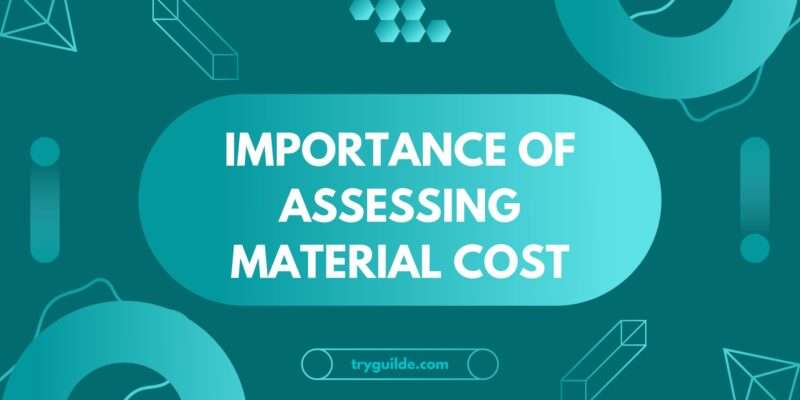The Importance of Assessing Material Costs in Construction Estimates
Why Material Costs Matter
Material costs form a significant portion of the overall budget in any construction project. As a general contractor or small construction business owner, correctly assessing these costs can be the difference between a profitable project (…and ultimately business) and one that runs into financial issues. Moreover, accurate cost estimates help in securing financing and setting realistic client expectations.
Factors to Consider for Accurate Material Cost Assessment
When calculating material costs for construction estimates, several factors need to be considered. These include the type and quality of materials, quantity required, delivery costs, and potential waste. Market fluctuations can also greatly impact material costs, thus necessitating regular updates to your estimates. For example, weather-related events are possible outliers and analysts continue to monitor the prices of lumber following the Canadian wildfires this summer.
Using Technology to Streamline Material Cost Calculations
Modern technology provides a variety of tools that can streamline the process of material cost calculation. Software options such as Guilde’s estimating tools can automate the calculation process, reducing human error, and improving efficiency.
It’s impossible to keep track of all the real-time changes in the supply of materials that affect your business and your customer’s property. A software like Guilde’s give general contractors the ability to tap into material cost data and enable you to calculate the profitability of your business more accurately.
Best Practices for Construction Estimate Accuracy
Conducting a Thorough Scope Analysis
A thorough scope analysis is the first step to accurate construction estimating. This involves understanding the project’s requirements, assessing the work involved, and determining the materials and labor needed.
Utilizing Historical Data for Reference
Historical data from past projects can be invaluable when creating estimates. It provides a reference point for costs and can highlight potential areas of overspend. However, the point of the article is to alert contractors that price fluctuations do happen and relying on old data may be a good exercise as a placeholder but may ultimately hurt the return on investment of your project and the profitability of your company.
Collaborating with Suppliers for Precise Pricing
Working closely with suppliers can help ensure you have the most up-to-date pricing information for your estimates. Many contractors have relationships with their suppliers who can give you insights into materials that you are regularly in the market for. However, that may not be the case for all materials. Instead of relying on the word of your supplier, contractors would use Guilde’s real-time material cost data to make smarter decisions.
Incorporating Contingency for Unforeseen Material Expenses
No construction project goes entirely to plan. It is wise to incorporate a contingency fund into your estimates to cover unforeseen material expenses. Many contractors have this happen, but it is often a tough conversation to have with their clients. It is recommended to always pad your expenses with wiggle room. You can do this smartly if you have the most accurate materials cost data.
Updating Material Costs Regularly
As previously mentioned, material costs can fluctuate due to market conditions. Regularly updating these costs in your estimates is vital to maintain accuracy. In the modern world, this doesn’t mean you need to keep an excel sheet with all the updated cost, because that’s not realistic and will take a lot of time and effort. You can now access tools that have a holistic view of the market.
Common Mistakes to Avoid in Material Cost Assessment
Overlooking Hidden Material Costs
Hidden costs such as delivery fees, storage costs, and waste disposal can often be overlooked in material cost assessments. It’s important to factor these in to avoid unexpected costs down the line.
Ignoring Market Fluctuations
Ignoring market fluctuations can lead to inaccurate estimates. Always stay informed about market trends and adjust your estimates accordingly.
Relying Too Heavily on Assumptions
While assumptions can sometimes be necessary, relying too heavily on them can lead to significant inaccuracies in your estimates.
Failing to Account for Waste and Overages
Waste and overages are common in construction projects. Failing to account for these in your material cost assessments can lead to cost overruns.
The Impact of Accurate Material Cost Assessment
Ensuring Project Feasibility and Profitability
By accurately assessing material costs, you can ensure the feasibility of your project and maximize profitability.
Preventing Cost Overruns and Delays
Accurate material cost assessments can help prevent cost overruns and project delays, leading to improved project management and client satisfaction.
Improving Resource Allocation and Project Management
Finally, accurate construction estimates lead to better resource allocation and more effective project management. This can result in cost savings and more successful projects overall.
